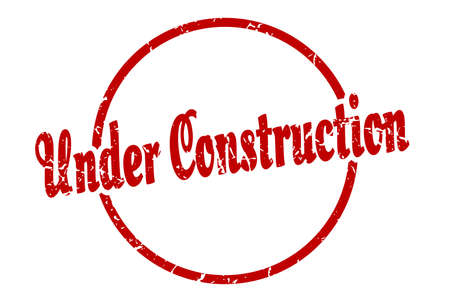Understanding the Risks of Damp and Water Ingress in UK Basements
Basement dampness is a prevalent issue for many UK homeowners, largely due to the country’s unique climate and architectural heritage. Understanding the risks associated with water ingress is the first step towards effective waterproofing and damp-proofing. The following factors contribute significantly to basement moisture problems across the United Kingdom:
| Cause | Description | Impact on Basements |
|---|---|---|
| Heavy Rainfall | The UK experiences frequent and intense rainfall, especially in autumn and winter months. | Excessive surface water can seep through walls or floors, causing persistent damp patches or flooding. |
| High Water Tables | Many areas have naturally high water tables, particularly in low-lying or coastal regions. | Groundwater pressure increases, forcing moisture through any weaknesses in basement structures. |
| Older Building Construction | A large proportion of UK homes were built before modern damp-proofing standards existed. | Poor or non-existent original waterproofing allows easier passage of moisture into basements. |
The combination of these elements means that even well-maintained properties are at risk if proper precautions aren’t taken. Homeowners should be aware that ignoring early signs of damp can lead to structural damage, unhealthy living conditions, and costly repairs. Addressing these common causes head-on ensures longevity and comfort for your property.
2. Initial Assessment: Identifying Existing and Potential Problems
Before embarking on any basement waterproofing or damp-proofing works, it is crucial to carry out a comprehensive initial assessment. This step ensures that you address the root causes of moisture ingress and prevent further complications down the line. Begin with a detailed visual inspection, checking for tell-tale signs such as flaking paint, musty odours, discoloured plaster, and visible mould growth—common issues in many UK basements due to our climate. Pay special attention to corners, skirting boards, and behind stored items where damp may go unnoticed.
Guidelines for Thorough Basement Inspections
- Check Walls and Floors: Look for efflorescence (white powdery deposits), damp patches, and peeling finishes.
- Assess Ventilation: Inspect air bricks or vents for blockages and ensure air can circulate freely.
- Examine Timber: Probe skirting boards or joists for softness or fungal growth—early signs of rot.
- Monitor Odours: Persistent musty smells often indicate hidden moisture problems.
Understanding Moisture Issues: Condensation vs Rising Damp vs Penetrating Damp
Identifying the type of damp affecting your basement is essential for effective treatment. The table below outlines key differences to help you recognise each issue during your assessment:
| Damp Type | Main Causes | Common Signs | Typical Locations |
|---|---|---|---|
| Condensation | Poor ventilation and high humidity | Water droplets on windows, black mould spots | Window reveals, cold external walls |
| Rising Damp | Moisture drawn up from the ground due to failed DPC (Damp Proof Course) | Tide marks on walls, salt deposits (efflorescence), decaying skirting boards | Ground floor walls, especially at lower levels |
| Penetrating Damp | Water ingress from outside due to defective pointing, gutters, or walls below ground level | Damp patches spreading horizontally, moss growth on external walls | Any wall exposed to rainwater or below ground level |
The Importance of Early Detection
Catching these issues early will save significant time and money in repairs later. If unsure about the cause or extent of any problem found during your inspection, consult a qualified surveyor or damp specialist familiar with UK building standards. Early intervention is key to ensuring your basement remains dry, structurally sound, and fit for use.

3. Choosing the Right Waterproofing Solutions
When it comes to safeguarding your basement in the UK, selecting the appropriate waterproofing solution is crucial due to the country’s varied climate and common issues such as high water tables and persistent rainfall. There are several tried-and-tested methods popular among British homeowners that address both structural integrity and long-term damp control.
Popular Waterproofing Methods for UK Basements
| Method | Description | Best For | Maintenance Level |
|---|---|---|---|
| Tanking | A process where a waterproof barrier, usually a cementitious slurry or bituminous coating, is applied directly to walls and floors to prevent water ingress. | Older properties with solid brick or stone foundations; areas with visible seepage. | Low once installed correctly, but periodic inspection recommended. |
| Cavity Drain Membrane Systems (CDM) | Plastic membranes fixed to internal surfaces create a controlled cavity. Water entering behind the membrane is channelled into drainage systems and sump pumps. | Properties prone to ongoing water ingress; listed buildings where invasive works are limited. | Moderate; requires pump checks and keeping drainage channels clear. |
| Exterior Waterproof Coatings | Application of specialist coatings or membranes on the external side of basement walls to block moisture from penetrating the structure. | New builds or extensive renovations where external excavation is possible. | Low; initial installation is more disruptive but offers long-lasting protection. |
Tanking: A Traditional Solution with Modern Materials
Tanking remains a staple for many UK homeowners, particularly in period properties or where full wall access is possible. Advances in tanking materials mean improved flexibility and crack-bridging abilities, making them suitable for both minor damp issues and significant leaks. Proper surface preparation and professional application are vital to ensure effectiveness and longevity.
Cavity Drain Membrane Systems: Versatility for Challenging Situations
Cavity drain membrane systems have grown in popularity due to their adaptability. They allow any water entering the structure to be safely managed without causing damage. CDMs are especially useful in older homes where preserving original features is important, as they require minimal alteration to existing masonry.
Exterior Waterproof Coatings: Proactive Defence from the Outside In
While sometimes less practical for retrofitting on terraced or closely built properties, exterior waterproof coatings provide robust protection when included during new construction or major refurbishments. These solutions not only stop water before it reaches interior spaces but can also enhance thermal performance if combined with insulation systems.
Making Your Selection
The choice between these methods depends on factors such as property age, accessibility, budget, and the extent of existing damp problems. Consulting a certified waterproofing specialist familiar with British building practices ensures you select a method that offers lasting protection tailored to your home’s unique requirements.
4. Damp-Proofing Techniques for Long-Term Protection
Effective damp-proofing is crucial for maintaining the structural integrity and comfort of British basements, especially given the UK’s naturally high groundwater levels and frequent rainfall. Below, we explore key techniques tailored to UK properties that offer reliable, long-term protection.
Damp-Proof Courses (DPC)
A damp-proof course is a horizontal barrier installed in walls to prevent moisture rising by capillary action from the ground. For traditional brick or stone UK homes, upgrading or retrofitting a DPC can be essential. Modern options include chemical injection DPCs, physical membranes, and mortar-based solutions, each suitable for different property types and ages.
| DPC Type | Best For | Typical Lifespan |
|---|---|---|
| Chemical Injection | Older brick homes; minimal disruption | 20-30 years |
| Physical Membrane | New builds or major renovations | 50+ years |
| Mortar-Based Solutions | Heritage properties; lime mortar walls | Varies (requires inspection) |
Ventilation Improvements
Proper ventilation is vital in combating condensation-related damp in British basements. Installing air bricks, passive vents, or mechanical ventilation systems helps maintain airflow and regulate humidity levels. Many UK basements benefit from positive input ventilation (PIV) units, which introduce fresh air from above ground level and expel stale, moist air.
Common Ventilation Solutions:
- Air Bricks: Simple and effective for older properties.
- PIV Systems: Ideal for homes with persistent condensation problems.
- Extractor Fans: Targeted solution for specific areas like utility rooms or bathrooms within the basement.
Sump Pump Installations
Sump pumps are a practical solution for managing groundwater ingress in many UK basements, particularly those below the water table or in flood-prone areas. A sump pit is installed at the lowest point of the basement floor, collecting excess water and automatically pumping it away to a suitable drainage point outside the property. Modern British systems feature battery backups to ensure continued operation during power cuts—a common concern during heavy storms.
Main Benefits of Sump Pumps:
- Prevents flooding and standing water damage.
- Lowers risk of mould growth and structural decay.
- Adds value and reassurance for future buyers.
Selecting the right damp-proofing technique involves assessing your property’s age, construction type, location, and historic issues with moisture. Combining these methods ensures comprehensive long-term protection tailored specifically for UK basements.
5. Professional Installation vs DIY: What to Consider in the UK
When it comes to waterproofing and damp-proofing your basement, UK homeowners often face the choice between undertaking the work themselves or hiring certified specialists. Each approach has distinct advantages and drawbacks, particularly when considering compliance with British Standards such as BS 8102:2009 (Code of practice for protection of below ground structures against water from the ground). Below, we explore key factors to help you decide the best route for your property.
DIY Basement Waterproofing: Pros and Cons
| Advantages | Disadvantages |
|---|---|
| – Lower upfront cost – Immediate scheduling flexibility – Opportunity to learn new skills |
– May lack expertise in identifying hidden issues – Risk of not meeting BS 8102:2009 standards – Potential voiding of home insurance if improperly installed – Limited access to professional-grade materials |
Professional Installation: Pros and Cons
| Advantages | Disadvantages |
|---|---|
| – Work carried out by qualified technicians – Full compliance with British Standards – Guarantees and warranties often provided – Access to industry-leading products and technology – Certified surveyors can identify structural concerns |
– Higher upfront costs – Scheduling may require waiting periods – Need to vet and select reputable contractors (considering accreditations like PCA or TrustMark) |
Key British Standards to Keep in Mind
- BS 8102:2009: Specifies requirements for basement waterproofing systems, including design, materials, and installation best practices.
- PAS 2035/2030: Relevant for retrofit works, ensuring quality and energy efficiency alongside moisture control.
Making Your Decision
If your basement is subject to severe water ingress or you are planning a habitable conversion, professional installation is strongly recommended. Specialist contractors will conduct a thorough assessment, recommend appropriate Type A (barrier), Type B (structurally integral), or Type C (drained cavity) systems in line with BS 8102, and issue certification required for future property sales. For minor repairs or maintenance—such as sealing small cracks—an experienced DIY enthusiast may achieve satisfactory results but should always ensure their work aligns with relevant standards. Ultimately, balancing cost savings against long-term peace of mind, regulatory compliance, and property value protection is crucial when deciding between DIY or professional basement waterproofing in the UK.
6. Ongoing Maintenance and Monitoring
Ensuring the long-term effectiveness of your basement waterproofing and damp-proofing measures in the UK requires a structured approach to ongoing maintenance and monitoring. Regular checks are crucial, especially given the unpredictable British weather and the potential for heavy rainfall. By implementing best practices for routine maintenance, you not only protect your property from future water ingress but also maintain its overall value.
Best Practices for Regular Checks
Establish a schedule for inspecting key areas susceptible to moisture, such as walls, floors, windows, and sump pump systems. After periods of heavy rain or snowmelt, pay special attention to signs of damp patches, efflorescence (white salt deposits), or musty odours. Utilise the following checklist to guide your inspections:
| Area to Inspect | What to Look For | Recommended Frequency |
|---|---|---|
| Walls & Floors | Cracks, damp spots, mould growth | Quarterly |
| Sump Pump | Proper operation, no blockages | Biannually & after storms |
| Windows & Vents | Condensation, leaks, damaged seals | Monthly |
| External Drainage | Clogged gutters, pooling water near foundations | Seasonally |
Routine Maintenance Essentials
Proactive maintenance can greatly extend the lifespan of your waterproofing solutions. This includes clearing gutters and drains, re-sealing any cracks with appropriate UK-approved sealants, servicing dehumidifiers, and ensuring ventilation is unobstructed. In older properties commonly found in Britain, regularly check for deterioration in original damp-proof courses or membranes.
Early Intervention Strategies
If you spot early warning signs—such as persistent dampness or minor leaks—address them promptly before they escalate. Contact a qualified local contractor familiar with UK building regulations if repairs exceed DIY capability. Early intervention not only prevents structural damage but also reduces the risk of costly remedial work down the line.
Maintaining Property Value
A well-maintained basement free from water ingress is a significant asset in the UK property market. Document all inspections and repairs; this paperwork can be invaluable when selling your home or renewing insurance policies. By following these ongoing maintenance and monitoring best practices, you ensure your basement remains dry, healthy, and structurally sound for years to come.


